Bloom Clock/Keys/New Hampshire/July/Pink Flowers

This page is part of a dichotomous key for plants recorded as blooming in New Hampshire during the month of July.
These plants have the following traits:
- Pink flowers
Securigera varia
 Wikipedia • Commons • Wikibooks (horticulture) • Wikibooks (subject) • Wikispecies • Fruit and seed clock | Profile for Securigera varia (Crown Vetch)
Recent Logs
| ||||||||||||
Global data:
Temperate zone season(s): Early Summer, Mid Summer, Late Summer, Early Fall, Mid Fall, Late Fall
Trifolium arvense
Wikipedia • Commons • Wikibooks (horticulture) • Wikibooks (subject) • Wikispecies • Fruit and seed clock | Profile for Trifolium arvense (Rabbit's-foot Clover)
Recent Logs
| ||||||||
Global data:
Temperate zone season(s): Early Summer, Mid Summer, Mid Fall
Trifolium pratense
 Wikipedia • Commons • Wikibooks (horticulture) • Wikibooks (subject) • Wikispecies • Fruit and seed clock | Profile for Trifolium pratense (Red Clover)
Recent Logs
| ||||||||||
Global data:
Temperate zone season(s): Late Spring, Early Summer, Mid Summer, Late Summer, Early Fall, Mid Fall, Late Fall
Trifolium repens
_Edit.jpg) Wikipedia • Commons • Wikibooks (horticulture) • Wikibooks (subject) • Wikispecies • Fruit and seed clock | Profile for Trifolium repens (White Clover)
Recent Logs
| ||||||||||
Global data:
Temperate zone season(s): Late Spring, Early Summer, Mid Summer, Late Summer, Early Fall, Mid Fall
Spiraea japonica
 Wikipedia • Commons • Wikibooks (horticulture) • Wikibooks (subject) • Wikispecies • Fruit and seed clock | Profile for Spiraea japonica (Japanese Spiraea)
Recent Logs
| ||||||||
Global data:
Temperate zone season(s): Early Summer, Mid Summer, Late Summer, Early Fall, Mid Fall
Mentha arvensis
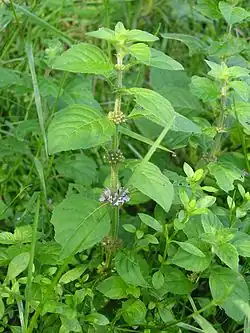 Wikipedia • Commons • Wikibooks (horticulture) • Wikibooks (subject) • Wikispecies • Fruit and seed clock | Profile for Mentha arvensis (Field Mint, Wild Mint)
Recent Logs
| ||||||||||||||||
Global data:
Temperate zone season(s): Mid Summer, Late Summer
Triadenum virginicum
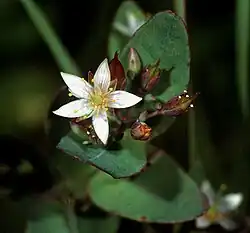 Wikipedia • Commons • Wikibooks (horticulture) • Wikibooks (subject) • Wikispecies • Fruit and seed clock | Profile for Triadenum virginicum (Virginia marsh St. Johnswort)
Recent Logs
| ||||||||||||||
Global data:
Hydrangea macrophylla
 Wikipedia • Commons • Wikibooks (horticulture) • Wikibooks (subject) • Wikispecies • Fruit and seed clock | Profile for Hydrangea macrophylla (Bigleaf Hydrangea)
Recent Logs
| ||||||
Global data:
Temperate zone season(s): Early Summer, Mid Summer, Late Summer, Early Fall, Mid Fall
Desmodium canadense
 Wikipedia • Commons • Wikibooks (horticulture) • Wikibooks (subject) • Wikispecies • Fruit and seed clock | Profile for Desmodium canadense (Showy Tick-trefoil)
Recent Logs
| ||||||||||||||
Global data:
Temperate zone season(s): Late Summer
Lespedeza capitata
 Wikipedia • Commons • Wikibooks (horticulture) • Wikibooks (subject) • Wikispecies • Fruit and seed clock | Profile for Lespedeza capitata (Roundhead Lespedeza)
Recent Logs
| ||||||||||||
Global data:
Temperate zone season(s): Mid Summer, Late Summer
Gaultheria procumbens
Wikipedia • Commons • Wikibooks (horticulture) • Wikibooks (subject) • Wikispecies • Fruit and seed clock | Profile for Gaultheria procumbens (Eastern Teaberry, Checkerberry, Boxberry and American Wintergreen)
Recent Logs
| ||||||||||||||||||
Global data:
Temperate zone season(s): Mid Summer, Late Summer
Pyrola
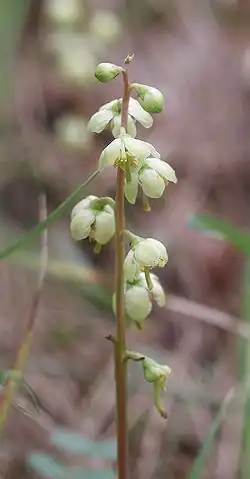 Wikipedia • Commons • Wikibooks (horticulture) • Wikibooks (subject) • Wikispecies • Fruit and seed clock | Profile for Pyrola (Pyrola)
Recent Logs
| ||||||||||
Global data:
Dianthus armeria
Wikipedia • Commons • Wikibooks (horticulture) • Wikibooks (subject) • Wikispecies • Fruit and seed clock | Profile for Dianthus armeria (Deptford Pink)
Recent Logs
| ||
Global data:
Temperate zone season(s): Early Summer, Mid Summer, Late Summer, Early Fall, Mid Fall
Hemerocallis
.jpg) Wikipedia • Commons • Wikibooks (horticulture) • Wikibooks (subject) • Wikispecies • Fruit and seed clock | Profile for Hemerocallis (Daylily)
Recent Logs
| ||||||||||
Global data:
Temperate zone season(s): Early Summer, Mid Summer, Late Summer, Early Fall
Rosa
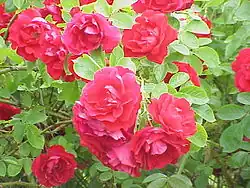 Wikipedia • Commons • Wikibooks (horticulture) • Wikibooks (subject) • Wikispecies • Fruit and seed clock | Profile for Rosa (Rose)
Recent Logs
| ||||||||||||||
Global data:
Temperate zone season(s): Late Spring, Early Summer, Mid Summer, Late Summer, Early Fall Mid Fall, Late Fall
Polygonum pensylvanicum
 Wikipedia • Commons • Wikibooks (horticulture) • Wikibooks (subject) • Wikispecies • Fruit and seed clock | Profile for Polygonum pensylvanicum (Pennsylvania Smartweed)
Recent Logs
| ||||||||||||||
Global data:
Lobelia dortmanna
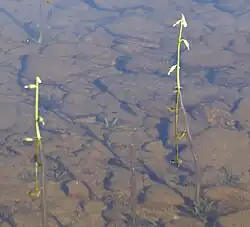 Wikipedia • Commons • Wikibooks (horticulture) • Wikibooks (subject) • Wikispecies • Fruit and seed clock | Profile for Lobelia dortmanna (Water Lobelia)
Recent Logs
| ||||||||||||||||
Global data:
Temperate zone season(s): Mid Summer, Late Summer
Asclepias syriaca
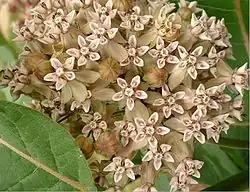 Wikipedia • Commons • Wikibooks (horticulture) • Wikibooks (subject) • Wikispecies • Fruit and seed clock | Profile for Asclepias syriaca (Common Milkweed)
Recent Logs
| ||
Global data:
Temperate zone season(s): Early Summer, Mid Summer
Dianthus deltoides
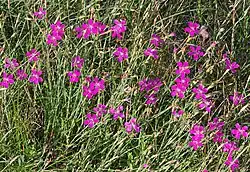 Wikipedia • Commons • Wikibooks (horticulture) • Wikibooks (subject) • Wikispecies • Fruit and seed clock | Profile for Dianthus deltoides (pinks)
Recent Logs
| ||
Global data:
Monotropa uniflora
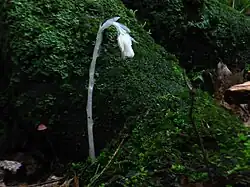 Wikipedia • Commons • Wikibooks (horticulture) • Wikibooks (subject) • Wikispecies • Fruit and seed clock | Profile for Monotropa uniflora (Indian Pipe)
Recent Logs
| ||||||||||||||||||
Global data:
Temperate zone season(s): Early Summer, Mid Summer, Late Summer, Early Fall
Rhus typhina
 Wikipedia • Commons • Wikibooks (horticulture) • Wikibooks (subject) • Wikispecies • Fruit and seed clock | Profile for Rhus typhina (Staghorn Sumac)
Recent Logs
| ||||||||||||
Global data:
Temperate zone season(s): Early Summer
Hesperis matronalis
 Wikipedia • Commons • Wikibooks (horticulture) • Wikibooks (subject) • Wikispecies • Fruit and seed clock | Profile for Hesperis matronalis (Dame's Rocket)
Recent Logs
| ||||||||
Global data:
Temperate zone season(s): Late Spring, Early Summer, Late Summer, Mid Fall
Saponaria officinalis
 Wikipedia • Commons • Wikibooks (horticulture) • Wikibooks (subject) • Wikispecies • Fruit and seed clock | Profile for Saponaria officinalis (Soapwort)
Recent Logs
| ||||||||
Global data:
Temperate zone season(s): Late Spring, Early Summer, Mid Summer, Late Summer, Early Fall, Mid Fall
Rhododendron
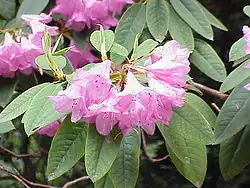 Wikipedia • Commons • Wikibooks (horticulture) • Wikibooks (subject) • Wikispecies • Fruit and seed clock | Profile for Rhododendron (Rhododendrons and Azaleas)
Recent Logs
| ||||
Global data:
Temperate zone season(s): Early Spring, Mid Spring, Late Spring, Early Summer, Mid Summer
Kalmia angustifolia
 Wikipedia • Commons • Wikibooks (horticulture) • Wikibooks (subject) • Wikispecies • Fruit and seed clock | Profile for Kalmia angustifolia (Sheep-laurel)
Recent Logs
| ||||||||
Global data:
Temperate zone season(s): Early Summer, Mid Summer
Viola tricolor
 Wikipedia • Commons • Wikibooks (horticulture) • Wikibooks (subject) • Wikispecies • Fruit and seed clock | Profile for Viola tricolor (Heartsease, Johnny-jump-up)
Recent Logs
| ||
Global data:
Temperate zone season(s): Early Summer, Mid Summer, Late Summer, Early Fall, Mid Fall
Tradescantia
 Wikipedia • Commons • Wikibooks (horticulture) • Wikibooks (subject) • Wikispecies • Fruit and seed clock | Profile for Tradescantia (Spiderwort)
2009 Logs
=====Recent Logs===== | ||||||||||
Global data:
Temperate zone season(s): Late Spring, Early Summer, Mid Summer, Late Summer
Asclepias incarnata
 Wikipedia • Commons • Wikibooks (horticulture) • Wikibooks (subject) • Wikispecies • Fruit and seed clock | Profile for Asclepias incarnata (Swamp Milkweed)
Recent Logs
| ||||||||||||
Global data:
Temperate zone season(s): Early Summer, Mid Summer, Late Summer
Silene vulgaris
.jpg) Wikipedia • Commons • Wikibooks (horticulture) • Wikibooks (subject) • Wikispecies • Fruit and seed clock | Profile for Silene vulgaris (Bladder Campion)
Recent Logs
| ||
Global data:
Monarda didyma
 Wikipedia • Commons • Wikibooks (horticulture) • Wikibooks (subject) • Wikispecies • Fruit and seed clock | Profile for Monarda didyma (Bee Balm)
Recent Logs
| ||||||||
Global data:
Chimaphila umbellata
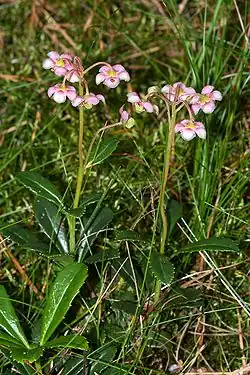 Wikipedia • Commons • Wikibooks (horticulture) • Wikibooks (subject) • Wikispecies • Fruit and seed clock | Profile for Chimaphila umbellata (Pipsissewa)
Recent Logs
| ||||||||||
Global data:
Temperate zone season(s): Mid Summer
Aster novae-angliae
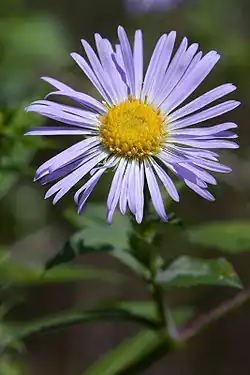 Wikipedia • Commons • Wikibooks (horticulture) • Wikibooks (subject) • Wikispecies • Fruit and seed clock | Profile for Aster novae-angliae (New England Aster)
Recent Logs
| ||||||||||
Global data:
Temperate zone season(s): Early Summer, Mid Summer, Late Summer, Early Fall, Mid Fall, Late Fall
Lythrum salicaria
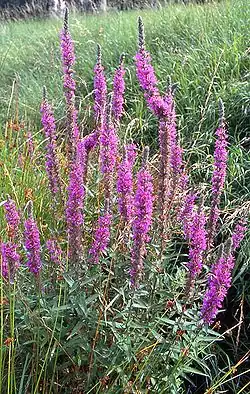 Wikipedia • Commons • Wikibooks (horticulture) • Wikibooks (subject) • Wikispecies • Fruit and seed clock | Profile for Lythrum salicaria (Purple Loosestrife)
Recent Logs
| ||||||||
Global data:
Temperate zone season(s): Early Summer, Mid Summer, Late Summer, Early Fall
